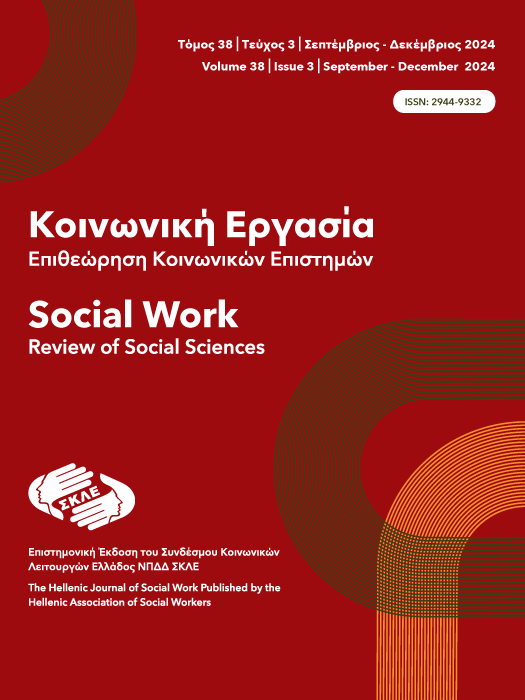Mental resilience and empathy in social workers dealing with child domestic violence in the context of Juvenile Protection Teams

Abstract
Resilience and empathy are important characteristics of social workers who work with abused children. The purpose of this research is to investigate the levels of mental resilience and empathy in Social Workers who deal with child abuse within the framework of the Juvenile Protection Teams (JPOs) in Greece. 150 questionnaires were distributed electronically to social workers, members of J.P.T.of their Municipality with a convenience sampling procedure.145 questionnaires were received. The majority of the sample are women at a rate of 92.4%, with an average age of 42.57 years, married and have had two children. The questionnaire included three sections: the demographic data, the resilience and empathy scale. The main conclusions of the work do not show a statistically significant relationship between demographic variables (age, gender, marital status, educational level) and mental resilience as well as empathy, confirming previous studies. In contrast, there appears to be a significant positive correlation of resilience and empathy, r = .443, p < .05 suggesting that higher levels of resilience in social workers are associated with increased empathy and vice versa. Finally, subject knowledge is a positive predictor of resilience, as there is a high correlation between resilience and the knowledge level of social workers. The work demonstrates the importance of empathy and knowledge of the subject as key elements of the mental resilience of social workers employed in the J.P.Ts. and by extension increasing their effectiveness in child protection in our country. Thus, the imperative need for systematic supervision emerges as a factor of both protection and updated knowledge. Resilience and empathy are important characteristics of social workers who work with abused children. The purpose of this research is to investigate the levels of mental resilience and empathy in Social Workers who deal with child abuse within the framework of the Juvenile Protection Teams (JPOs) in Greece.
Article Details
- How to Cite
-
Koutmeridou, K. (2024). Mental resilience and empathy in social workers dealing with child domestic violence in the context of Juvenile Protection Teams. Social Work. Review of Social Sciences, 38(3), 32–50. https://doi.org/10.12681/socialwork-rss.38305
- Section
- Article

This work is licensed under a Creative Commons Attribution-NonCommercial-ShareAlike 4.0 International License.


